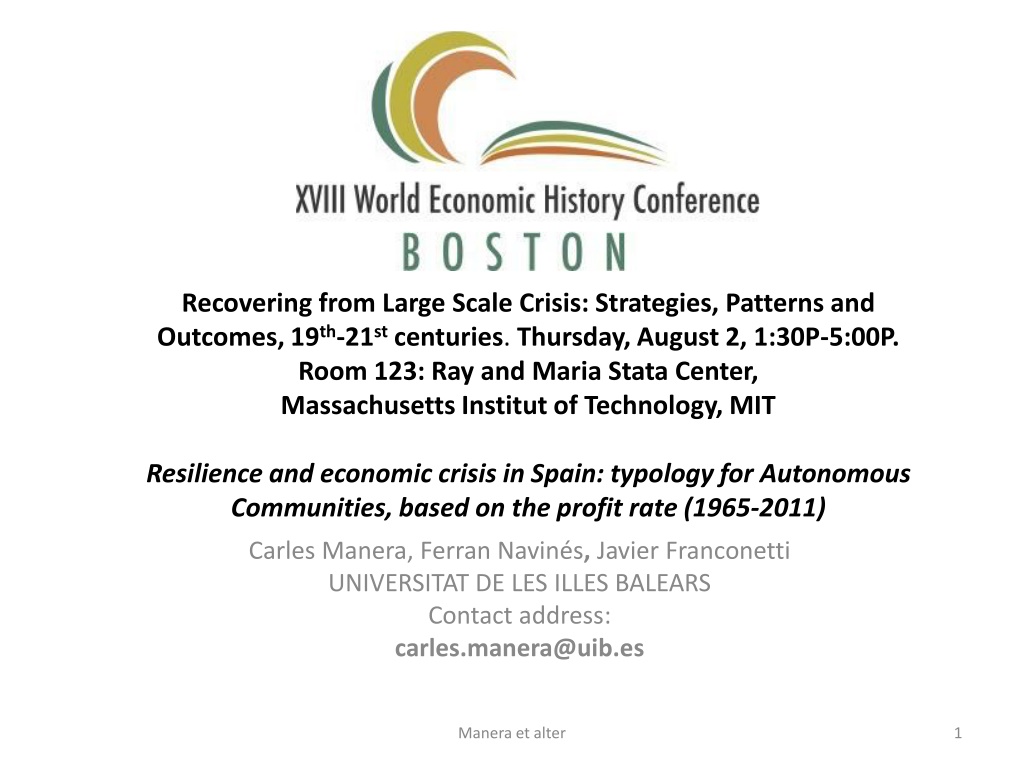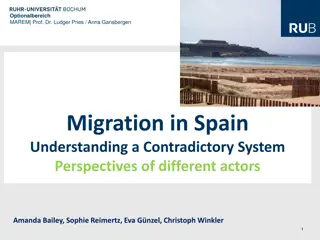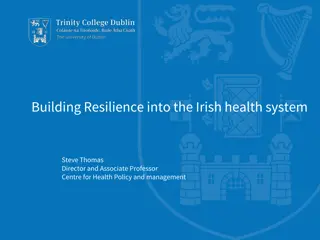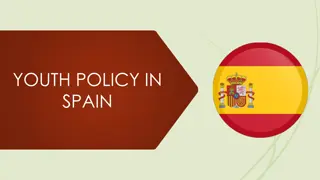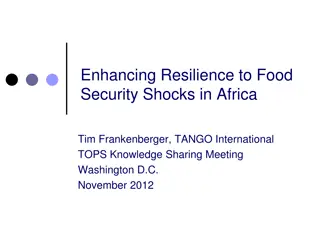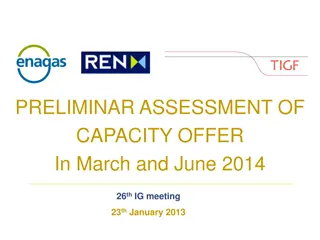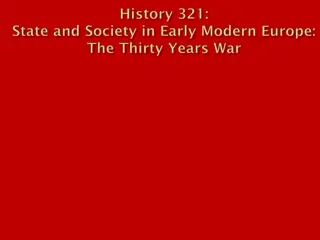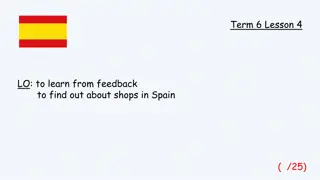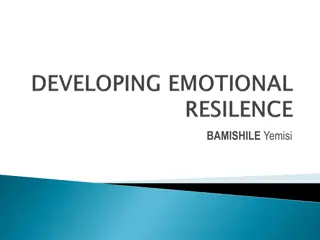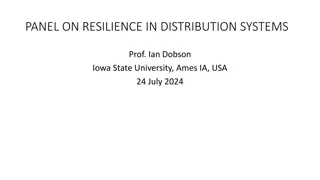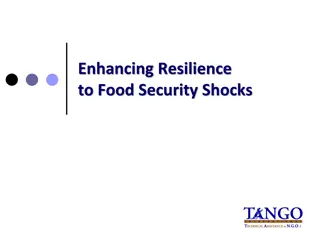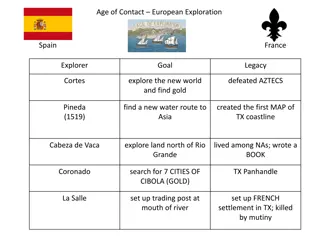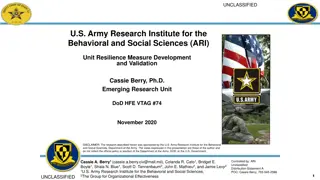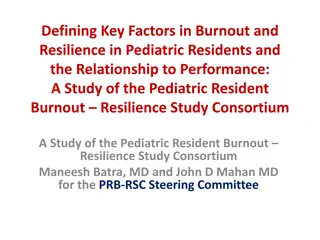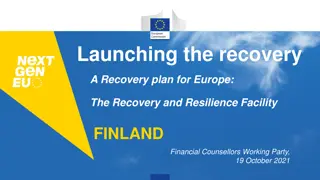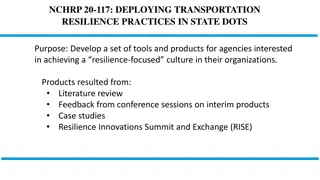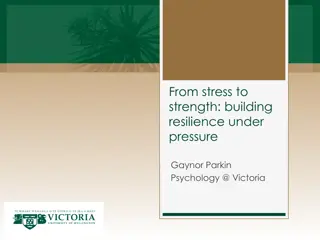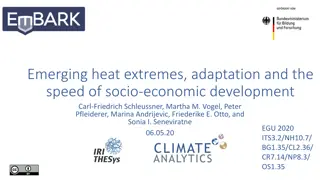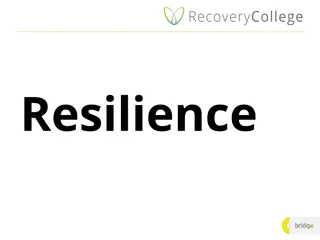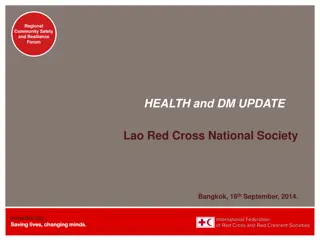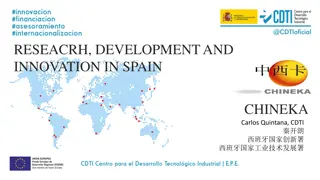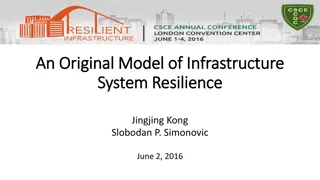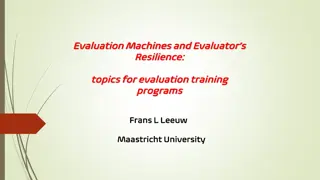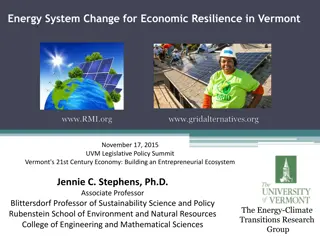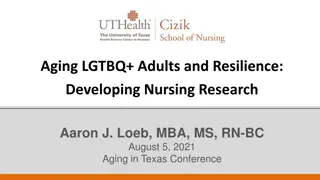Resilience and Economic History: Strategies and Outcomes in Spain
This study explores the resilience and economic history of Spain, focusing on the typology for Autonomous Communities based on the profit rate from 1965 to 2011. The research delves into key indicators and factors for measuring resilience, emphasizing the productivity of capital and operating surplus. By examining the rate of profit and its components, the analysis highlights the decreasing profile of Spain's economic resilience over time.
Download Presentation

Please find below an Image/Link to download the presentation.
The content on the website is provided AS IS for your information and personal use only. It may not be sold, licensed, or shared on other websites without obtaining consent from the author. Download presentation by click this link. If you encounter any issues during the download, it is possible that the publisher has removed the file from their server.
E N D
Presentation Transcript
Recovering from Large Scale Crisis: Strategies, Patterns and Outcomes, 19th-21stcenturies. Thursday, August 2, 1:30P-5:00P. Room 123: Ray and Maria Stata Center, Massachusetts Institut of Technology, MIT Resilience and economic crisis in Spain: typology for Autonomous Communities, based on the profit rate (1965-2011) Carles Manera, Ferran Navin s, Javier Franconetti UNIVERSITAT DE LES ILLES BALEARS Contact address: carles.manera@uib.es Manera et alter 1
Definition: Resilience and economic history The concept of resilience originates in the field of psychology and the environmental sciences, and was resumed from the Great Recession on for economic analysis. The resilience of a regional economy can be defined as its capacity to adapt better than other spaces to the economic difficulties caused by periods of crisis. Manera et alter 2
Motivation: Methodology and objective The methodology used in this paper has been employed for other research, with the adoption of the profit rate and the productivity of capital as estimated essential cores, in the Spanish case, based on the BdMores database. Regarding this, the objective is to establish an index of resilience as an indicator that may be useful for regional economic analysis, although we are aware that more in-depth work needs to be done in this field of configuration of individual and synthetic indices in order to improve comprehension regarding the re- adaptive capacities of the regions. Manera et alter 3
TWO Key indicators for measuring the capacity of resilience The productivity of capital ( K) And the share operating surplus (q) of gross Manera et alter 4
And THREE Key factors, ratios The rate of profit (r), defined as the ratio between the gross operating surplus (GOS) and the capital stock (K), can be expressed as a product of two factors: a) The first, the surplus share (q) that reconciles the gross operating surplus (GOS) percentage in the national income (Y); that is q=GOS/Y b) The second, the productivity of capital ( K), the ratio that measures the relationship between the national income (Y) and the capital stock: K=Y/K so that: c) r = GOS/K * GOS/Y = K * q Manera et alter 5
The profile of rate of profit: DECREASING Based on the concepts expounded, and using the BdMores base for economic analysis as we propose, two determining graphs have been drawn up with one objective: Observing resilience evolution of the rate of profit based on identifying the crisis periods of the Spanish economy throughout the period 1965-2013. One can see a common, decreasing pattern of the profit rates from the end of the Keynesian regulation phase until the neo-liberal phase a process already detected for the United States and the big European economies research projects linked to the in other Manera et alter 6
Periods In this context, it is interesting to specify the recessive or crisis phases, which limit the timeline. In order to develop the cycle-trend analyses applied to the original series of the rate of profit of the Spanish economy, the Hodrick- Prescott filter has been represented in graph 2 were obtained, enabling one to identify six periods: Three of economic recovery (1968-1975, 1982-1989 and 1997-2005), And three of recession and crisis (1975- 1982, 1989-1997 and On the basis of this periodisation, one can define complete cycles with an average duration of 14 years, with periods recession/crisis of 7 to 8 years. used and cycle 2005-2011. of recover and of Manera et alter 7
Typologies of resilience Expressio g ( K) > -g (q) g ( K) < g (q) -g ( K) < g (q) g ( K) < -g (q) -g ( K) < -g (q) -g ( K) > -g (q) -g ( K) > g (q) ___________________________________ _ (A) CAPITAL EFFICIENT (B) CAPITAL INEFFICIENT (q): the surplus share = q=GOS/Y ( K): the productivity of capital = K=Y/K r = GOS/K * GOS/Y = K * q Growth of (r) > 0 > 0 > 0 < 0 < 0 < 0 < 0 Having recession periods, one can approach resilience model for all of the communities. used to different regional typologies of resilience, based on the explanatory variables of the profit rate, is based on the classification modalities shown in chart. identified the A A the regional autonomous The model analyse B B the of the Manera et alter 8
Typologies of resilience Table 2: Resilience index of the CA for the three crisis periods . Years 1975-1982; 1989-1997; 2005-2011 Resilience ndex 1. Pa s Vasco 2. Extremadura 3. Catalu a 4. Galicia 5. Arag n 6. Navarra 7. Cantabria 8. Illes Balears 9. Andaluc a 10. Asturias 11. Canarias 12. Castilla-La Mancha 13. Madrid 14. La Rioja 15. Murcia 16. Valencia 17. Castilla y Le n Source: self made. 7 7 5 5 5 5 5 5 4 4 4 3 3 3 2 2 1 (6.98) (6.90) (5.38) (5.16) (5.06) (4.84) (4.69) (4.56) (4.39) (4.22) (4.16) (3.30) (3.17) (2.92) (2.40) (1.92) (1.08) Manera et alter 9
CONCLUSIONS (1) 1. defined imply that, in terms of resilience, it is important to maintain or certain industrial base. The paradigmatic affirmation is Country, which is the region that presents the highest SRI. It also enables one to explain the good behaviour Catalonia; and that of the successful industrialisations , Galicia, Aragon and Navarre. The regional typologies 2. By contrast, there also seems to be another possible line of resilient specialisation: communities intense specialisation tourism, which has enabled them to compensate their high level of deindustrialisation, for example the Balearic Islands, Andalusia and Islands. consolidate a with more in case the of Basque this the Canary of new as such Manera et alter 10
CONCLUSIONS (2) 3. Cantabria and Asturias are also in this intermediate situation, for a path of resistance to deindustrialisation processes, in part due to the contribution European cohesion fund and without heading towards an intense specialisation tourism. 4. We find the regions of new, unconsolidated industrialisation , Castilla-La Mancha, La Rioja and Castile and Le n; or those with unsuccessful in tourism, which is the case of Murcia. i.e. significant an specialisation intense, by the in Manera et alter 11
CONCLUSIONS (3) 5. Finally, three singularities: Madrid, because of the effect of being a capital and which, in terms of public employment. Extremadura, due to the excessively weighty role the gross operating surpluses of the energy sector play in its economy, its overestimated. And Valencia, which appears to represent a failed path in terms of the consolidation industrial and specialisation. Effect of a greater percentage of informal economy, In short, this methodology, which emphasizes the importance of the profit rate productivity of provide a complementary vision and even a ground-breaking one as regards evolution of the autonomous communities. The relevance presented is that it can be applied to different economic realities, with a disparate format and different structures, as long as one has the suitable statistical materials to process it. and the can capital, the economic SRI result is of the model of a certain tourism-oriented Manera et alter 12
THANKS FOR YOUR ATTENTION Manera et alter 13
